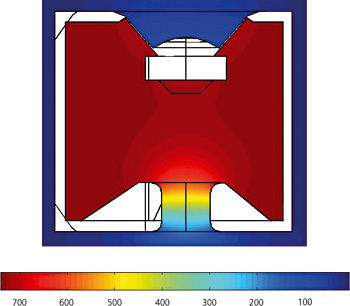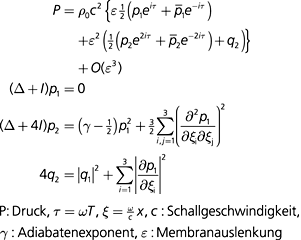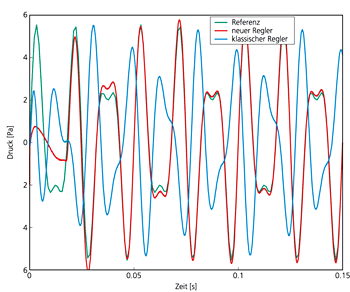
The project presented here has been carried out in close cooperation with the company KS-Beschallungstechnik, one of the most renowned addresses for expert sound systems. The company is already using digital signal processors (DSP) very successfully in order to produce mid-range and treble loudspeakers with a unique sound reproduction. The applied filters use as input the impulse response stored in the memory.
However, this technique cannot be transferred to bass speakers, because high performance for low frequencies requires a strong excursion of the membrane or hardly damped resonances of the box. Both effects result in a long reverberation time and nonlinear effects like the superproportional occurrence of overtones if the performance is increased (distortions).
Project Goals
The controller is supposed to determine the voltage at the moving coil in such a way that, on the one hand, the sound pressure produced follows the incoming signal (e.g., CD) as exactly as possible, and on the other hand the electric and mechanical loads remain uncritical.
From a control theoretical point of view, we are thus dealing with the problem of an optimal tracking. The required quality of this feedback, the strong nonlinear individual dynamics of a bass speaker, and the real-time computation represent a challenge that is not even met by regulators developed especially for nonlinear systems. The method of feedback linearization (mirror filter), e.g., does not include a mechanism to limit energy.
The concept developed at the Fraunhofer ITWM generalizes the principle of an optimal linear output-feedback. It is based on a nonlinear state space model of the speaker, which describes how the state variables, e.g., current or membrane excursion, change depending on the control voltage. In particular, the method allows the forecast of the sound pressure as a function of control voltage and original state.
This forecast can be compared with a section of the incoming signal anticipated by a few milliseconds. Finally, the control voltage is selected in such a way that the resulting difference, as well as the energy stored in the speaker, remain as small as possible. The central problem is the symbolic approximation of the occurring differential equations and optimization problems in such a way that the voltage is represented as a polynomial in the original state and the incoming signals. The solution arises from an unconventional coupling of computer algebra and asymptotic analysis.
Software Package Automates the Process Steps
In order to realize the control concept on a DSP in a simple way, a software package has been developed at the Fraunhofer ITWM which automates all the necessary process steps, from the identification of the nonlinear state space model on the basis of measurements to the output of the polynomial coefficients essential for the controller.
At the moment, the hardware integration of the DSP is not yet finished. If the regulated bass speaker behaves as it does in the simulation, the sound reproduction will correspond to the quality of the mid-range and treble speakers in every way, so that the product line of KS-Beschallungstechnik will be rounded off.


